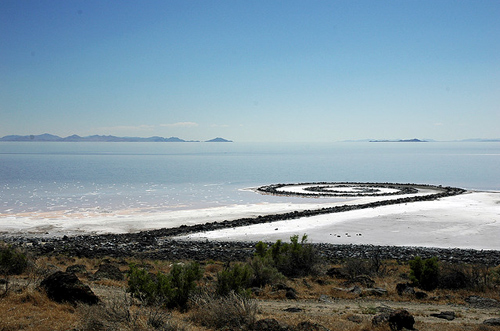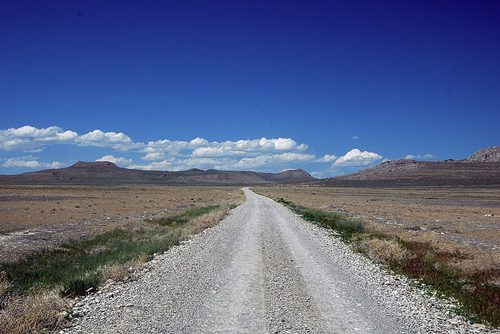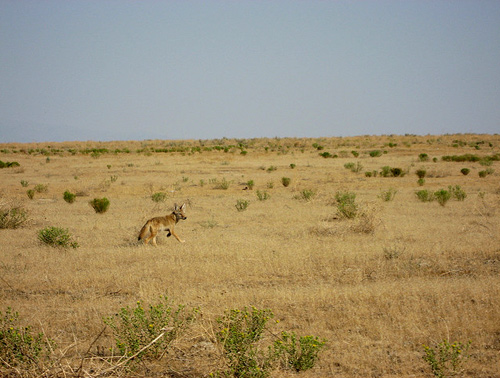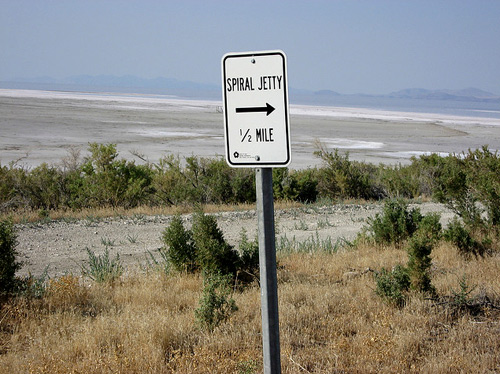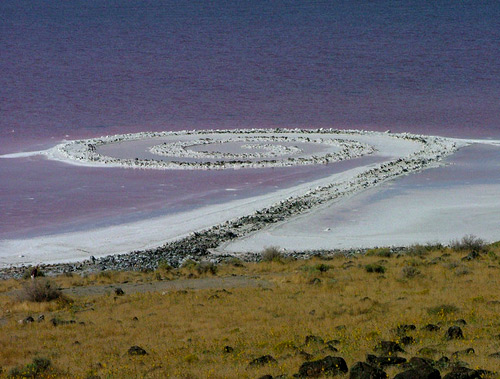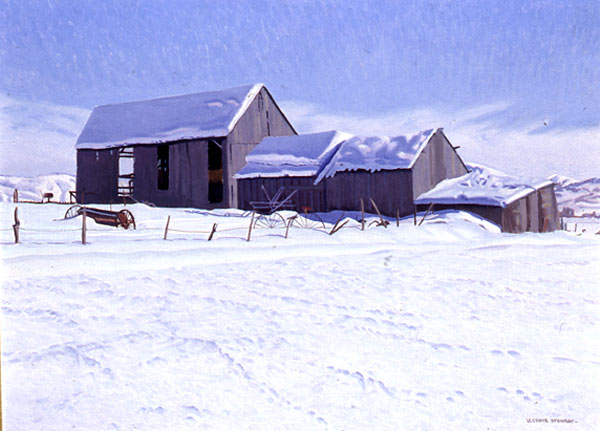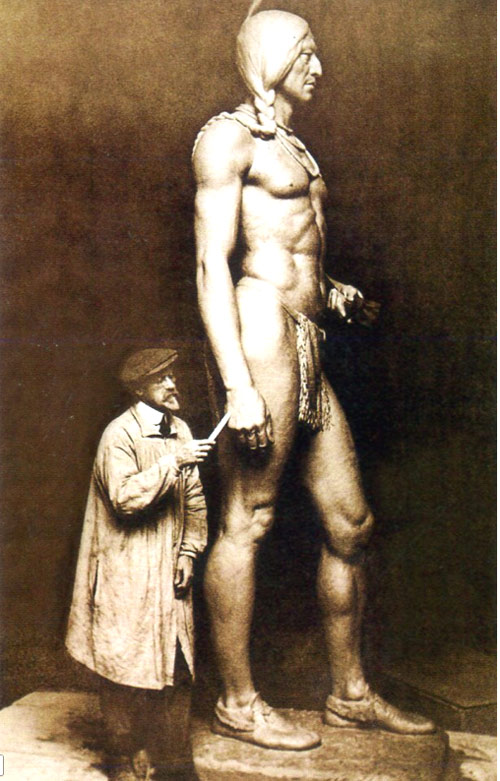Painting of the Day, December 30, 2011
 Friday, December 30, 2011 at 9:30PM Tweet
Friday, December 30, 2011 at 9:30PM Tweet By Donna Poulton
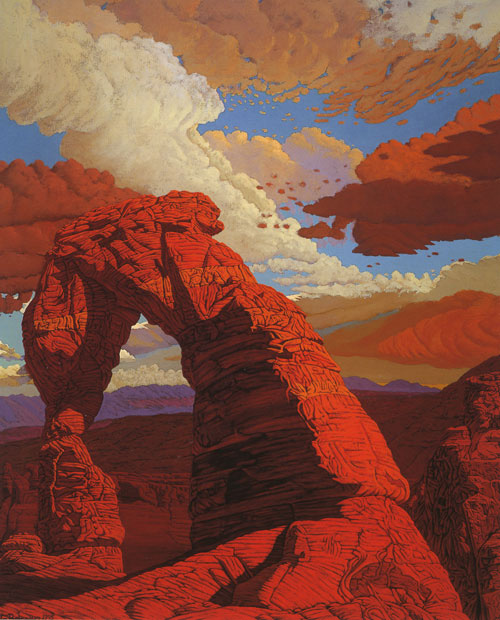 Anton J. Rasmussen, Delicate Arch (Study), 1995 oil on canvas on masonite, 36 x 48 in. Private Collection. Credit: Painters of Utah’s Canyons and Deserts
Anton J. Rasmussen, Delicate Arch (Study), 1995 oil on canvas on masonite, 36 x 48 in. Private Collection. Credit: Painters of Utah’s Canyons and Deserts
Anton J. Rasmussen’s Delicate Arch (1995) is his most widely recognized work. Commissioned by the Salt Lake International Airport and painted on location, the towering image of Delicate Arch is 23 feet high by 18 feet wide; a size worthy of its subject.
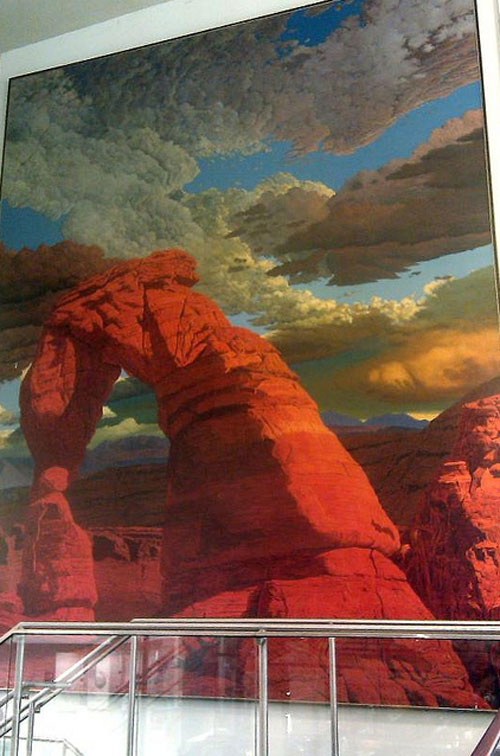 Delicate Arch at the Salt Lake International Airport. Credit: 3M30
Delicate Arch at the Salt Lake International Airport. Credit: 3M30
Like Thomas Moran, whose landscapes were not composed for literal reference, but rather to evoke emotional impressions of a setting, Rasmussen's paintings represent:
"… a composite of different perspectives and different rock formations, and the palette is developed out of visual sensations collected over time … Many people have commented that they’ve seen the particular view I painted ‘just that way,’ even though it would be impossible to do so. I have decided that as one recalls the experience of visiting the southern Utah landscape, the experience is idealized … the experiences are combined in the viewer’s mind to form a single recollection of the experience."
The multi-colored clouds and spiraling activity in Delicate Arch are loud, crowding for attention. The clouds are a softer version of the repeated motifs seen in the rocks and are important elements in understanding the decay of the rock itself. Of this process Rasmussen notes that there is a lot of “rhythm and movement, the sort of things that would have carved that rock out over the many millions of years.”

